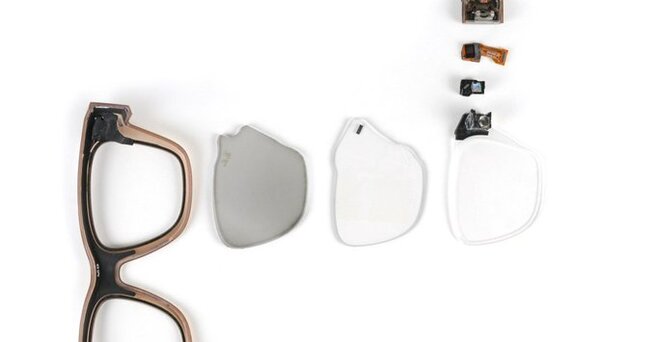
iFixit’s teardown of Meta’s latest smartglasses reveals a surprising truth: the Meta Ray-Ban Display’s most interesting tech might be the glass — not the internal components. Behind the sleek $800 design lies cutting-edge optical engineering that defines how these AR glasses project visuals without giving away what you’re seeing.
According to iFixit, the Meta Ray-Ban Display’s glass uses a reflective geometric waveguide system that bounces light at precise angles. This ensures that only the wearer sees the image, while everyone else just sees normal lenses. It’s a subtle yet brilliant piece of optical design that gives Meta’s glasses a distinct edge in privacy and clarity.
Instead of traditional diffractive systems that bend and split light—often creating rainbow-like artifacts—the Meta Ray-Ban Display’s geometric waveguide glass keeps visuals clean and consistent. That means no distracting light leaks or reflections for those nearby.
Inside the right arm of the glasses sits a micro-projector powered by a liquid crystal on silicon (LCoS) display. This device uses three LEDs to create a sharp 600×600-pixel grid image, which is then reflected through the glass’s intricate optical system.
In simpler terms: the tech inside is cool, but the real innovation is in the lenses. The precision glasswork allows Meta to deliver immersive visuals without bulky hardware or visible projection paths.
There’s a catch. iFixit notes that the glass in the Meta Ray-Ban Display is expensive to produce, possibly leading Meta to sell the glasses at a loss. This mirrors the early days of smartphone displays, where cutting-edge manufacturing often outweighed retail pricing in pursuit of long-term dominance.
While the glass itself is a marvel, the teardown revealed one major flaw — the Meta Ray-Ban Display isn’t repairable. iFixit had to physically split the arms and frame to reach the internals, with no built-in way to reassemble them.
“Any repairs here are going to need specialized skills and specialized tools,” said iFixit’s Shahram Mokhtari. He added that these early models are clearly designed without longevity or user repair in mind.
Despite its repair challenges, the Meta Ray-Ban Display hints at what’s next for consumer AR. The integration of advanced optics and minimalist design could pave the way for lighter, more private smartglasses in the future.
In the end, the Meta Ray-Ban Display’s most interesting tech might be the glass — a blend of precision engineering and innovation that could define the next era of wearable computing.
𝗦𝗲𝗺𝗮𝘀𝗼𝗰𝗶𝗮𝗹 𝗶𝘀 𝘄𝗵𝗲𝗿𝗲 𝗿𝗲𝗮𝗹 𝗽𝗲𝗼𝗽𝗹𝗲 𝗰𝗼𝗻𝗻𝗲𝗰𝘁, 𝗴𝗿𝗼𝘄, 𝗮𝗻𝗱 𝗯𝗲𝗹𝗼𝗻𝗴. We’re more than just a social platform — from jobs and blogs to events and daily chats, we bring people and ideas together in one simple, meaningful space.